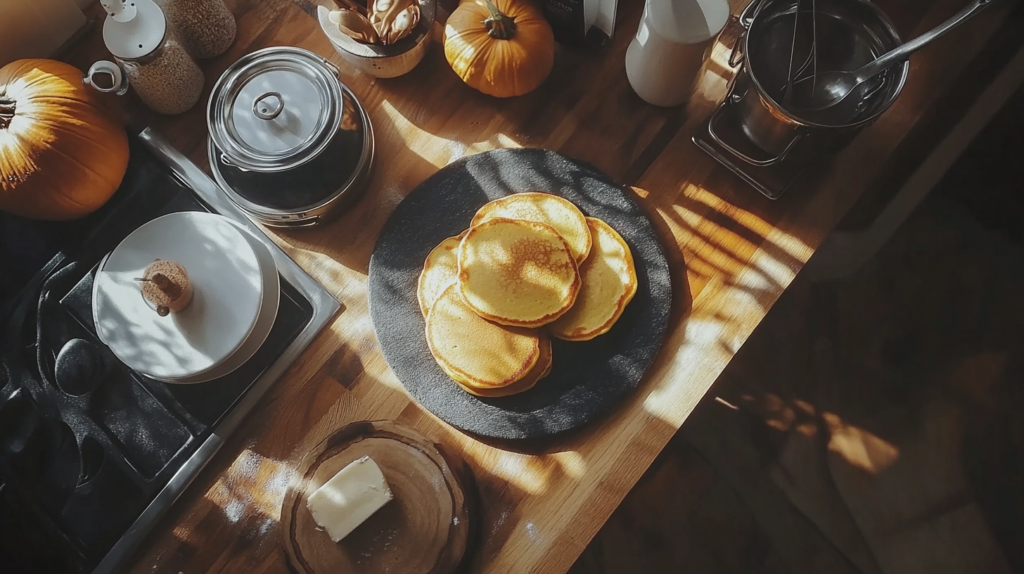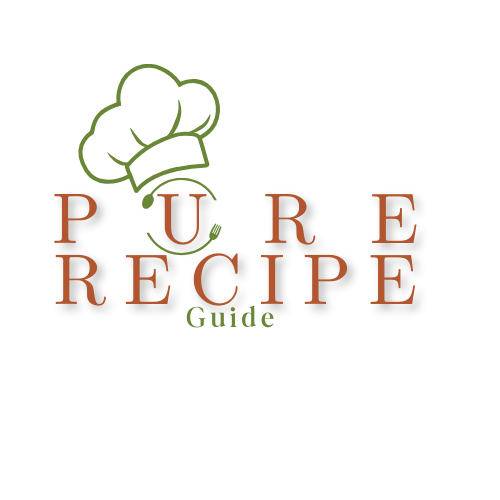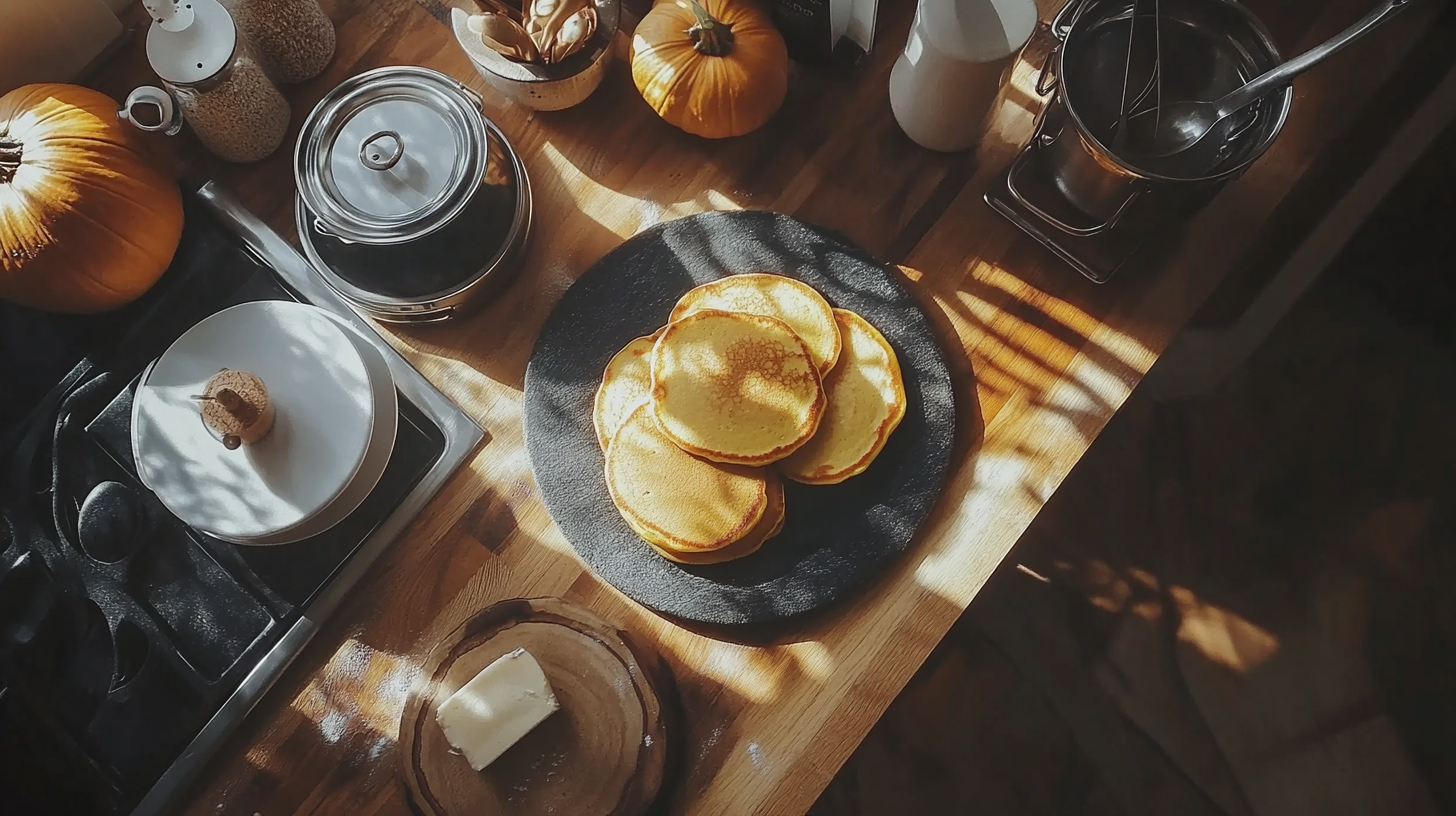Delve into the delightful ingredients and steps to create perfect pumpkin pancakes that bring autumn flavors to your breakfast table.

Introduction
Pumpkin pancakes are a seasonal favorite, blending rich flavors and hearty ingredients for a delicious breakfast treat. This comprehensive guide explores what are pumpkin pancakes made of, ensuring you create the perfect stack every time.
Understanding Pumpkin Pancakes
Pumpkin pancakes are a twist on traditional pancakes, incorporating pumpkin puree to add moisture, flavor, and nutritional value. The blend of spices like cinnamon, nutmeg, and cloves complements the natural sweetness of pumpkin, creating a warm and comforting dish perfect for fall mornings.
Key Ingredients
Pumpkin Puree: The Heart of Pumpkin Pancakes
Pumpkin puree is the key ingredient that gives pumpkin pancakes their signature flavor and texture. Its rich, velvety consistency adds moisture to the batter, while its natural sweetness and earthy undertones enhance the overall taste. For the best results, always choose pure pumpkin puree instead of pumpkin pie filling, which often contains added sugars, spices, and preservatives that can alter the recipe. Pure pumpkin puree lets you control the sweetness and seasoning, ensuring a perfect balance of flavors in every bite..
Flour
Flour serves as the base of the pancake batter, giving structure and body. All-purpose flour is commonly used, but alternatives like whole wheat or oat flour can add a nutty flavor and extra fiber.
Leavening Agents: The Secret to Fluffy Pancakes
Baking powder and baking soda are crucial for creating light and airy pancakes. These leavening agents react with the wet ingredients in the batter to release air bubbles, which help the pancakes rise and achieve their fluffy texture. Without them, the pancakes would be dense and heavy, missing the soft, pillowy consistency that makes them so delightful..
Sweeteners: Adding Balance and Depth to Your Dish
Sweeteners play a crucial role in culinary creations by balancing bold spices and enriching the overall flavor profile of a dish. Beyond just adding sweetness, they can provide depth, complexity, and even subtle notes that enhance other ingredients. Here’s a closer look at common sweeteners and their unique characteristics:
Agave Nectar: A light, neutral sweetener suitable for beverages or recipes where other sweeteners might overpower.
Granulated Sugar
A versatile and neutral option, granulated sugar dissolves easily and provides a clean, straightforward sweetness. It’s perfect for recipes where you want sweetness without altering the flavor profile significantly.
Brown Sugar
With its molasses content, brown sugar delivers a richer, slightly caramel-like flavor. It’s ideal for adding warmth and depth to baked goods, marinades, and savory dishes like barbecue sauces.
Maple Syrup
A natural sweetener with distinct earthy undertones, maple syrup pairs beautifully with warm spices like cinnamon, nutmeg, and cloves. Its liquid form makes it an excellent choice for dressings, glazes, or drizzling over finished dishes.
Honey
Known for its floral notes and natural richness, honey not only sweetens but also adds a subtle complexity to recipes. It works wonderfully in beverages, baking, and even savory dishes like honey-glazed vegetables or meats.
Other Options
Molasses: Deep and robust, molasses is perfect for recipes that need a strong, bittersweet touch, like gingerbread or baked beans.
Coconut Sugar: A lower glycemic index option with a mild caramel flavor, often used in healthier recipes.
Spices
Spices are crucial for the characteristic pumpkin pancake flavor. Typical spices include:
- Cinnamon: Adds warmth and sweetness.
- Nutmeg: Provides a nutty, spicy depth.
- Cloves: Offers a bold, aromatic note.
- Ginger: Adds a subtle heat and zest.
Eggs and Dairy
Eggs bind the ingredients together and contribute to the pancake’s structure. Dairy elements like milk or buttermilk add richness and moisture. Non-dairy alternatives can be used for vegan versions.
Additional Ingredients
Optional ingredients can enhance texture and flavor:
- Vanilla Extract: Adds a sweet, aromatic touch.
- Salt: Balances sweetness and enhances flavors.
- Oil or Melted Butter: Prevents sticking and adds moisture.
- Optional Mix-Ins: Such as chocolate chips, nuts, or dried fruits for added texture and flavor.
Step-by-Step Recipe
Preparing the Ingredients
- Combine Dry Ingredients: In a large mixing bowl, whisk together the flour, baking powder, baking soda, salt, and spices. This ensures the leavening agents and spices are evenly distributed throughout the batter, creating a consistent texture and flavor.
- Mix Wet Ingredients: In a separate bowl, beat the eggs until smooth. Stir in the pumpkin puree, milk, and melted butter or oil. Mix until all the ingredients are fully incorporated and the mixture is creamy and uniform.
- Combine Wet and Dry: Gradually pour the wet mixture into the bowl with the dry ingredients. Gently stir until the batter is just combined, being careful not to overmix. Overmixing can lead to dense pancakes instead of light and fluffy ones.
- Prepare Pumpkin Puree: Use fresh or canned pumpkin puree as the base for your recipe. If using fresh pumpkin, roast it until tender, then blend until smooth to achieve a consistent texture. Ensure the puree is well-drained to avoid adding excess moisture to the batter, which can affect the pancakes’ structure.
- Preheat the Griddle: A properly preheated griddle is key to cooking pancakes evenly and preventing them from sticking. Heat the griddle over medium heat until a few drops of water sizzle and evaporate instantly when sprinkled on the surface. This ensures the pancakes develop a golden-brown crust while remaining fluffy inside.
Cooking the Pancakes
- Grease the Griddle: Lightly oil the cooking surface to prevent sticking.
- Pour the Batter: Use a ladle to pour consistent amounts of batter onto the griddle.
- Cook Until Bubbly: Wait until bubbles form on the surface before flipping.
- Flip and Cook: Flip the pancakes and cook until golden brown on both sides.
Serving Suggestions
Pumpkin pancakes are versatile and can be served with various toppings:
- Maple Syrup: Classic and sweet.
- Whipped Cream: Adds a creamy texture.
- Fresh Fruits: Such as apples, pears, or berries.
- Nuts: Like pecans or walnuts for crunch.
- Spiced Butter: Enhances the pumpkin flavor.
Health Benefits of Pumpkin Pancakes
Pumpkin adds nutritional value to pancakes, offering:
- High in Fiber: Aids in digestion and promotes satiety.
- Rich in Vitamins: Especially Vitamin A and C, supporting immune health and vision.
- Low in Calories: When made with whole ingredients, they can be a healthy breakfast option.
- Antioxidants: Protect the body from oxidative stress and inflammation.
Variations and Enhancements
Vegan Pumpkin Pancakes
To make pumpkin pancakes vegan:
- Egg Substitute: Use flax eggs or chia seeds.
- Dairy-Free Milk: Almond, soy, or oat milk replace cow’s milk.
- Oil Instead of Butter: Use coconut oil or vegetable oil.
Gluten-Free Options
For gluten-free pumpkin pancakes:
- Gluten-Free Flour: Use almond flour, coconut flour, or a gluten-free all-purpose blend.
- Ensure All Ingredients are Gluten-Free: Check labels for hidden gluten sources.
Add-Ins and Toppings
Enhance your pancakes with:
- Chocolate Chips: For a sweet treat.
- Nuts: Such as pecans or walnuts for added crunch.
- Dried Fruits: Like raisins or cranberries for tartness.
- Spiced Syrups: Infuse syrups with cinnamon or nutmeg for extra flavor.
Common Mistakes to Avoid
- Overmixing the Batter: Leads to tough pancakes. Mix until just combined.
- Incorrect Heat: Too hot can burn the pancakes; too low can make them soggy. Maintain medium heat.
- Not Letting the Batter Rest: Resting allows the flour to hydrate and the flavors to meld.
- Using Excessive Liquid: Can make the batter too thin. Adjust as needed for the right consistency.
Frequently Asked Questions
What were pancakes made of?
Historically, pancakes were made from a simple batter of flour, water or milk, and eggs, cooked on a hot surface. Variations existed based on available ingredients, including additions like fruits or spices.
What are pumpkin muffins made of?
Pumpkin muffins typically include pumpkin puree, flour, sugar, eggs, oil, baking powder, and spices such as cinnamon, nutmeg, and cloves. They may also contain add-ins like nuts, chocolate chips, or dried fruits.
Does IHOP make pumpkin pancakes?
Yes, IHOP offers seasonal pumpkin pancakes, usually available during the fall months. These pancakes feature pumpkin flavoring and traditional spices, often topped with maple syrup or whipped cream.
What are plant-based pancakes made of?
Plant-based pancakes are made without animal products. Common ingredients include plant-based milk (almond, soy, oat), flax or chia eggs, dairy-free butter or oil, and flour. They maintain the same texture and flavor as traditional pancakes using these substitutes.
Conclusion
Understanding what are pumpkin pancakes made of allows you to create a delicious and nutritious breakfast that celebrates the flavors of autumn. By selecting quality ingredients and following the right steps, you can enjoy fluffy, flavorful pumpkin pancakes that delight the palate and nourish the body. Whether you prefer traditional recipes or love experimenting with variations, pumpkin pancakes are a versatile and beloved choice for any season.

